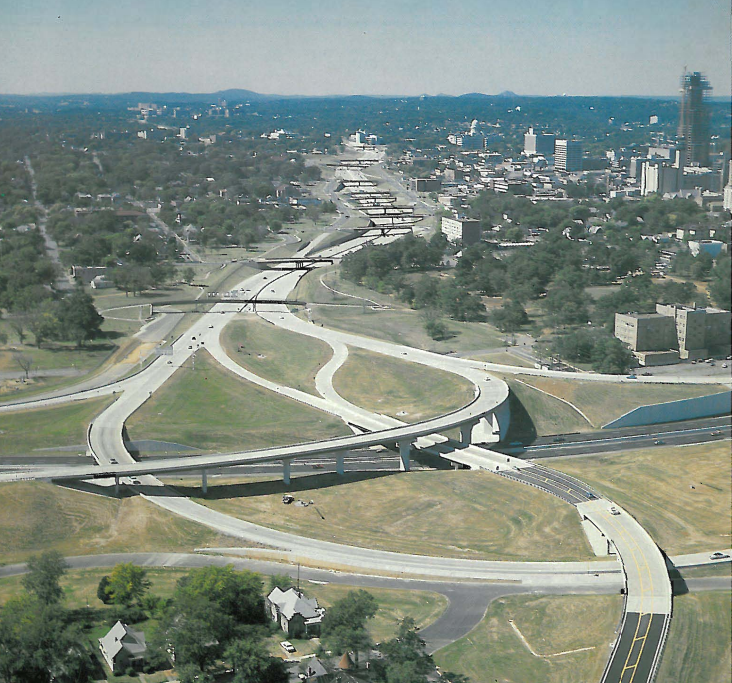Introduction
In this activity, you will examine primary sources on the I-630 interstate in Little Rock, Arkansas, to discover how this transportation project changed the cultural, economic, and demographic makeup of Little Rock.
Note: The topics discussed in this lesson plan are related to those in lesson plans 1 and 3.
Essential Questions
- Why do cities change?
- Which technologies characterize life in a city? How do technological innovations and advancements impact life in cities?
- How and why do changes in transportation and communication affect life in cities?
- How do geography tools (maps, graphs, globes, etc.) help us understand why and how cities change?

A
Learning Objectives
- Students will explain economic and demographic change in Little Rock concerning transportation over time.
A
Key Terms
- Interstate Highway System
- ACORN
A
Materials
- Maps-racial distribution of Little Rock from 1960-2020
- History Channel video: "The Creation of America's Highway System | The Engineering that Built the World (Season 1)"
- Expansion or Segregation: The History of I-630 in Little Rock (site renovation in progress. Not all links are currently accessible).